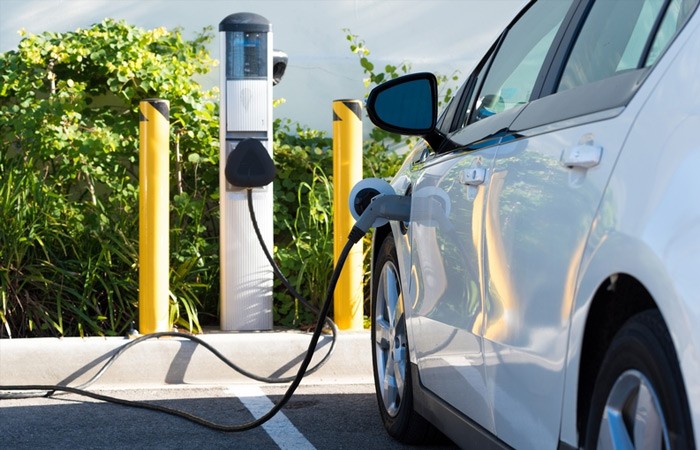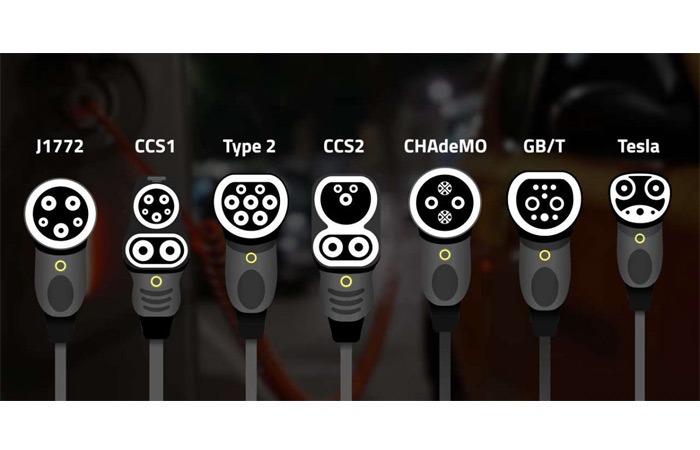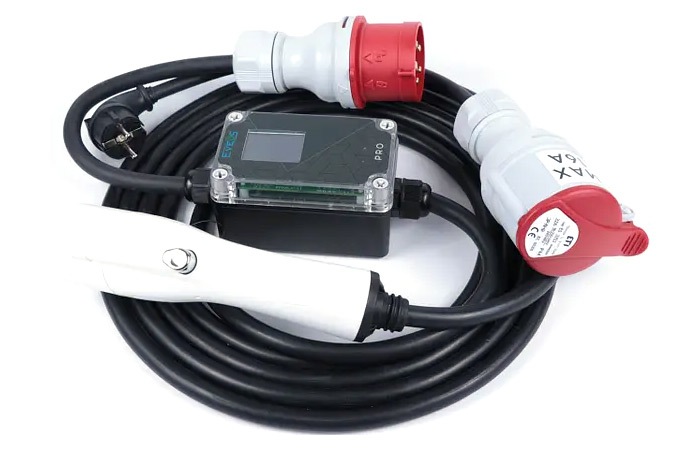How to choose an electric vehicle charger

Electric cars are becoming increasingly popular in many countries, and more and more of them are appearing on the roads every day. However, in order to use an electric car comfortably, it is necessary to have a suitable charger. In this article, we will tell you how to choose the right one electric vehicle charger, considering different types of connectors and technical parameters.
What are the connectors for connecting the charger?

There are several main varieties of charging connectors available:
- Type 1 (J1772): is common in North America and Japan. It has a five-pin connection and is suitable for charging electric vehicles with lower power ratings.
- Type 2 (Mennekes): is the most popular in Europe. It offers the possibility to charge electric vehicles with different power levels.
- CHAdeMO: designed for fast charging of electric vehicles and is most popular in Japan. It has a larger number of contacts and provides higher charging power.
- CCS: Combined Charging System: is a fast charging standard that combines AC and DC charging modes. Common in North America and Europe.
- GB/T 20234: a Chinese standard which, despite appearing similar to the European Type 2 standard, is not technically compatible with it. In China, there are two completely different variations of GB/T - one for AC and one for DC. However, there are practically no such electric cars in Ukraine.
- Tesla Supercharger - the connector has a flat trapezoidal shape with multiple contacts and provides direct current (DC) charging of electric vehicles with very high power. It's not just a charging port, but a true "power blower" that can charge a car's battery to more than 50% in just 20 minutes. The US Tesla Supercharger has 3 pins, while the European versions have 5 pins. Note that it is only available at commercial electric gas stations in the EU and US.
In France and Italy, electric companies have proposed the use of a Type 3 connector, which has contact protection and reduces the cost of charging stations. However, this connector limits station capacity to Mode 2 charging mode only and does not appear to provide an alternative. Nevertheless, the European Commission has set the Type 2 standard as mandatory for use in all European countries, creating a uniform standard across the continent.
Options for selecting the charger

Choosing the right charger for an electric vehicle plays a key role in the comfortable and efficient operation of the vehicle. When choosing one, it is important to take into account the charging parameters. Among the main characteristics are the following:
- Charging power: One of the most important parameters is the power of the device. This value is measured in kW (kilowatts) and affects the charging speed of the electric vehicle. More powerful chargers provide faster charging, but require a more powerful electrical network.
- Charging type: There are three types of charging: slow (home), public (public stations) and fast (fast charging stations for electric vehicles). Consider your needs and typical driving routes to choose the best type of charging system for you.
- Portability: Some chargers can be portable, making them convenient to travel and use at different locations.
- Adaptive mode: is a feature that allows the device to automatically adjust to mains conditions. When the mains voltage drops, the charger automatically reduces the current to maintain stable and safe charging. This mode is especially useful in case of an unstable mains supply with frequent voltage fluctuations, as it helps prevent possible problems and damage to the device or electric vehicle.
- Safety and certifications: Pay attention to certifications and safety standards that confirm the reliability and safety compliance of the charger.
Use of adapters
In Ukraine, most commercial recharging points for electric vehicles are equipped with Type 1 and Type 2 cables. However, because many electric vehicles in the country are American-made, Type 1 connectors are often occupied, while Type 2 connectors are free. To avoid waiting in line, some users use adapters to connect to the European connectors.
However, using adapters can be dangerous because the Type 1 and Type 2 standards have incompatible pilot signals and the adapter simply mimics the signal. This can lead to problems when disconnecting the connector, as the battery may remain under load, which can cause contact burnout, damage to electronics, or even fire.
In addition, the use of an adapter may cause loss of warranty, as they are prohibited by international standards, and car manufacturers do not welcome their use. A possible exception is Tesla's licensed adapters for connecting to the "supercharder" network according to CHAdeMO or CCS Combo 2 standards.
Portable or stationary electric car charger: which one to choose?
With the ever-increasing popularity of electric vehicles, owners are faced with choosing a charger for their vehicle. One of the key considerations is determining whether to choose a portable charger or a stationary charger. Let's take a look at which option would be the best choice.
Portable charger
Portable chargers, as their name suggests, are designed to be conveniently carried and used in a variety of locations. They are usually compact and lightweight, making them ideal for traveling and charging outside the home. Key features of portable chargers:
- Portability: They fit easily in the trunk and can be used anywhere with a suitable electrical outlet.
- Ease of use: Most portable chargers are easy to install and operate, making them suitable for a variety of users.
- Limited capacity: Due to their compact size, often have limited charging power. This can increase the charging time, especially for electric cars with large battery capacity.
Stationary charging station
Stationary chargers are installed in a single location, usually at home, in a garage or parking lot. They provide a constant and steady source of charging, which can be especially convenient for owners who have their own parking lot. Key features of fixed chargers:
- High power: Stationary chargers usually have a higher capacity than portable chargers, which reduces charging time.
- Ease of use: Because they lock into place, there is no need to re-install the charger each time.
- More customization options: Some stationary chargers allow for customizable operating parameters, which can be useful for optimizing the charge depending on the time of day and electricity rates.
So which is better?
The choice between portable and stationary charging depends on the needs and preferences of each electric car owner. If you need the flexibility of charging in different locations and often have to take long trips, a portable charger may be preferable. At the same time, a stationary charger offers the convenience and speed of charging in a permanent parking lot.
It is also important to consider the charging capacity, the availability of the electrical grid, and your needs for using your electric vehicle. Regardless of your choice, be sure to make sure that the charger you select is compliant with standards and safety to ensure an efficient and safe charging solution for your electric vehicle.
If you want to buy an electric car charger in Kiev, Kharkov and Odessa, then in the online store 130.com.ua you will find a large selection of models from a variety of manufacturers at an affordable price with delivery in Ukraine.
Materials on the topic
Electric car chargers: Best Sellers

Stay tuned for updates!
Subscribe to our Telegram channel and be the first to receive useful materials.
Subscribe






















